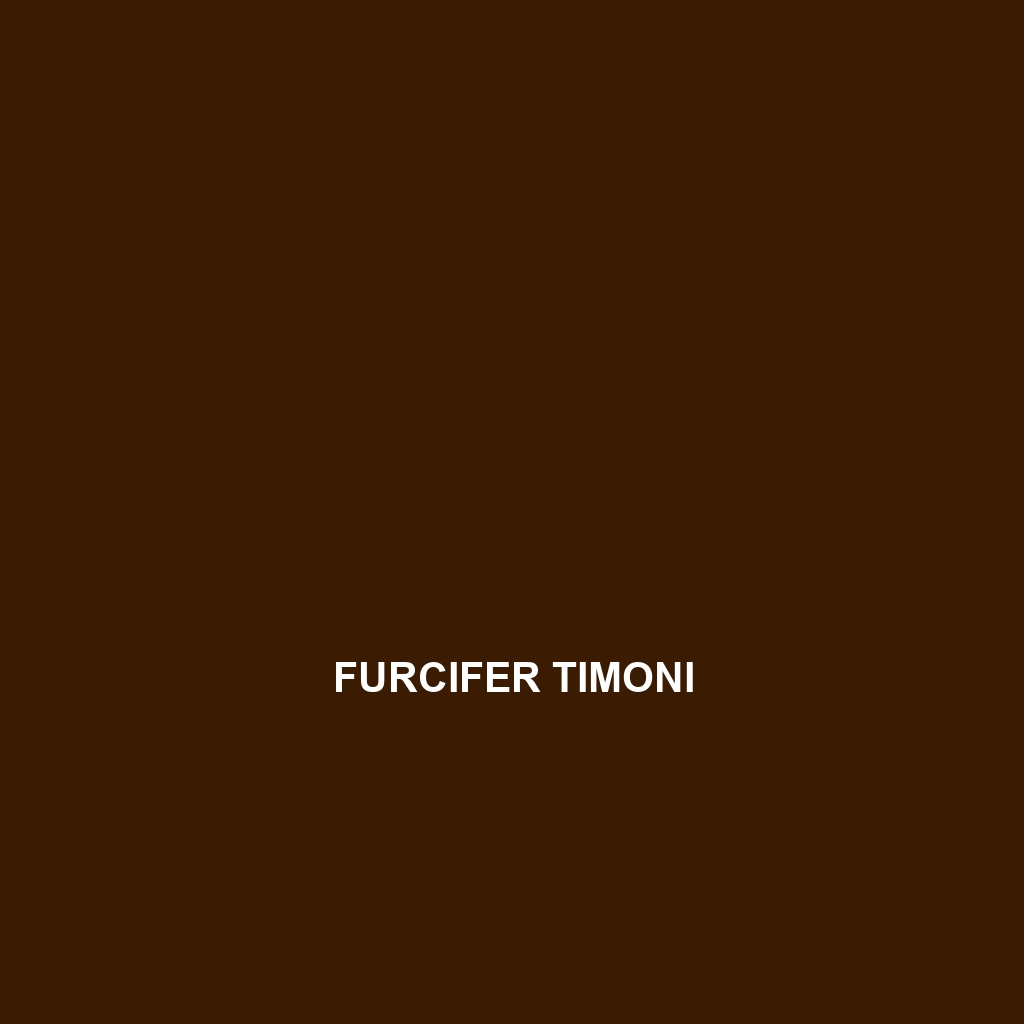Common Name
Furcifer timoni
Scientific Name
Furcifer timoni
Habitat
Furcifer timoni is primarily found in the lush and diverse environments of Madagascar, particularly in the eastern rainforests. These habitats are characterized by humid, tropical climates that exhibit seasonal variations in rainfall. The species thrives in dense foliage where it can camouflage among leaves, making it adept at avoiding predators. In addition to rainforests, Furcifer timoni can also be discovered in nearby savannas and scrubland areas, where the vegetation allows for both shelter and hunting opportunities. This adaptability to various environments highlights its ecological versatility, contributing significantly to its survival in Madagascar’s unique ecosystems.
Physical Characteristics
Furcifer timoni exhibits stunning physical characteristics that set it apart from other chameleons. Adult individuals typically reach lengths of 20 to 30 centimeters, with males being larger than females. One of the most notable features of Furcifer timoni is its vibrant coloration, which can vary greatly based on mood, temperature, and environmental conditions. Males are particularly known for their bold hues, including shades of green, yellow, and blue, adorned with striking patterns. An interesting physical adaptation of this species is its ability to change color rapidly; this not only assists in camouflage but also plays a role in communication and mating displays.
Behavior
The behavior of Furcifer timoni is fascinating and multifaceted. This species is primarily diurnal, spending its days basking in sunlight on branches and actively hunting for food. Their movement is deliberate and calculated; they often use a method known as “zygodactyl grasping,” which involves their unique foot structure to hold tightly to tree branches. During the mating season, vibrant color displays are a common sight as males compete for the attention of females through elaborate courtship rituals. Additionally, these chameleons are known for their territorial nature, and males will often display aggressive behaviors to ward off rivals.
Diet
Furcifer timoni is predominantly insectivorous, feeding on a diet that consists mainly of insects such as crickets, grasshoppers, and caterpillars. Their feeding habits showcase impressive hunting skills, as they use their long, sticky tongues to capture prey with minimal movement, enhancing their camouflage effectiveness. Occasionally, they may consume small invertebrates to supplement their diets. This specialized diet plays a critical role in controlling insect populations within their habitats, showcasing their importance as a predator within the ecosystem.
Reproduction
The reproductive cycle of Furcifer timoni is intricate and fascinating. Mating typically occurs during the warmer months, when males display vibrant coloration and engage in courtship behaviors. After successful mating, females will lay between 10 to 30 eggs in a burrowed nest, ensuring protection until they hatch. The incubation period lasts approximately 4 to 6 weeks, after which hatchlings emerge fully formed, ready to embark on their independent journey. Parental care is minimal in this species; once the eggs are laid, females do not return to provide any assistance to their offspring.
Conservation Status
The conservation status of Furcifer timoni is currently classified as vulnerable according to the IUCN Red List. Habitat loss due to deforestation and agricultural expansion poses significant threats to their survival, impacting both their natural habitats and food sources. Conservation efforts are underway in Madagascar to preserve these unique ecosystems, including the establishment of protected areas and breeding programs aimed at bolstering wild populations. However, challenges remain as illegal logging and habitat encroachment continue to threaten their environment.
Interesting Facts
One of the most intriguing aspects of Furcifer timoni is its remarkable ability to change color not just for camouflage but also as a form of communication. This chameleon species is known for its unique tongue, which can extend twice its body length to snatch prey swiftly. Moreover, Furcifer timoni has long been a subject of fascination in scientific studies into chameleonic color change, which showcases the complexities of reptilian adaptations to their environments.
Role in Ecosystem
Furcifer timoni plays a significant role in its ecosystem as both a predator and prey species. As an insectivore, it helps regulate insect populations, contributing to the overall health of the habitat. Additionally, these chameleons serve as prey for a variety of birds and larger reptiles, highlighting their position within the food web. Their presence indicates a healthy ecosystem, as they are sensitive to environmental changes. Enhanced understanding and conservation of Furcifer timoni contribute to the stability and biodiversity of Madagascar’s unique habitats.
